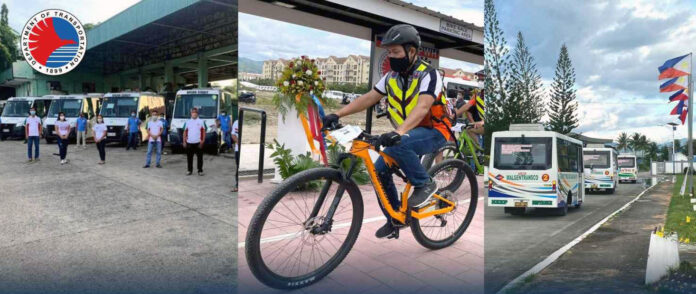
-
The Department of Transportation is proposing a total of P19.8 billion for various road transport projects nationwide for 2022
-
The department was only allocated P1 million for the road sector next year
-
Of the total, locally funded projects will corner P13.2 billion and foreign-assisted projects, P6.61 billion
The Department of Transportation (DOTr) is proposing a budget of P19.8 billion to fund various road transport projects nationwide for 2022. This, as only P1 million was approved for the sector under the National Expenditure Program (NEP) for 2022.
During the September 30 Senate Committee on Finance Hearing on DOTr’s proposed 2022 budget, Transportation Secretary Arthur Tugade said the P1 million allotment is sorely insufficient for the road sector, noting that funds are needed for service contracting efforts, construction of bike lanes, and free rides.
For locally funded projects, DOTr is seeking P13.2 billion and for foreign-assisted projects, P6.61 billion.
The local road projects consist of:
- P10 billion for the Service Contracting Program
- 5 billion, Active Transportation Infrastructure and Related Programs
- 71 million, PUV Modernization Program
- 97 million, EDSA Busway Project
- 91 million, Makati-BGC Greenways
- P40 million, feasibility study for the Ilocos Norte Transport Hub
- 71 million, Taguig City Integrated Terminal Exchange
- P100 million, feasibility study for the Bataan Bus Rapid Transit
The agency also proposed counterpart funding for foreign-assisted projects such as the EDSA Greenways Project (P243.47 million), Davao High Priority Bus System (P3.59 billion), Cebu Bus Rapid Transit (BRT) Project (P2.47 billion) and the Metro Manila BRT Line Project – Quezon Avenue (P300 million).
The DOTr said it was not true that the agency only proposed funds for the rail sector in the 2022 budget, even if most of the DOTr budget approved by the Department of Budget and Management (DBM) for inclusion in the NEP fell under that sector.
“It is not true that DOTr only proposed funding for the rail sector. As explained by Secretary Tugade, we proposed funding for all of DOTr’s four sectors… road, maritime, aviation, and railways. It just so happened that most of the funding approved by the DBM are for railways sector projects,” Transport Undersecretary for Railways TJ Batan said.
The DOTr noted that while the road sector should be given a bigger budget allocation, rail projects should also be pushed to close the gap created by decades of underinvestment and to catch up with other countries in terms of railways infrastructure.
According to a World Bank survey in 2019, the Philippines ranked last among 119 countries surveyed in terms of length of operational railways infrastructure.
Most rail projects the DOTr is looking to implement “were conceptualized, planned, and started decades ago, such as the Mindanao Rail in 1957, the Metro Manila Subway in 1973, the North South Commuter Railway or PNR Clark in 1994, LRT-2 East Extension in 1999, LRT-1 Cavite Extension in 2000, MRT-7 in 2001, and the Common Station in 2006,” Batan said.
He explained rail transport is more efficient in carrying passengers, especially in urban centers or densely populated cities. For the North South Commuter Railway and Metro Manila Subway, for example, he said, one train set with eight coaches can carry the same number of passengers transported on 1,318 cars, 224 jeepneys or 64 buses.




